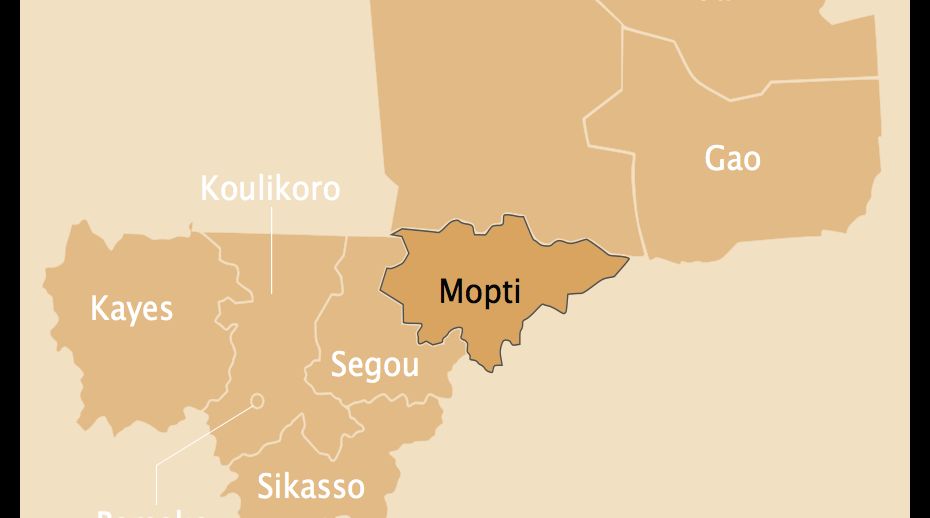
SIPRI is pleased to announce the publication of a new Insights Paper, entitled ‘Central Mali: violence, local perspectives and diverging narratives’.
Read the brief in English or French here.
At a time when international—and national—actors are increasingly intervening in central Mali, it is imperative to understand how these interventions alter local dynamics, and how external interpretations of the conflict give rise to new meaning to violence in the area. Local actors, in turn, use these external discourses to their advantage—to further their claim to legitimacy or their ability to gain power.
Without a profound understanding of the local perceptions of the dynamics of conflict in central Mali, the current or planned interventions there have little chance of gaining traction in the medium or longer term, according to new SIPRI research.
A late response to the conflict dynamics in central Mali
Early analyses of the conflict that erupted in Mali in 2012 focused on the dynamics affecting the three northern regions of Mali (Tombouctou, Kidal and Gao). However, since 2015, the central region of Mopti has been in the spotlight due to the dramatic increase in violence targeting security forces, elected or traditional officials, market places and schools.
As a result, analysts and policy makers are swiftly focusing their attention on central Mali, as they are concerned with the area’s urgently deteriorating security situation, and its consequences for the stability of both Mali, as a whole, and the wider region, more broadly.
The study explores how the Malian authorities and the international actors who intervened following the crisis of 2012 have struggled to effectively evaluate the threats and adequately respond to the emerging dynamics. In particular, it has been difficult to assess whether the Mopti region was experiencing a spillover from the conflict in northern Mali, or if local specificities were driving the violence.
This study argues that the failure to tackle the conflict dynamics affecting the Mopti region takes root in a number of challenges. In particular, following the 2012 crisis, international and national actors adapted the usual frameworks of conflict analysis; focusing on the northern regions and demands for independence, they overlooked the specificities of central Mali.
The progressive emergence of jihadist groups
The violence in central Mali is, indeed, partly as a consequence of developments in 2012. As a result of the conflict in the northern regions, armed mobilization in central Mali increased. The subsequent emergence of jihadist groups operating from central Mali—a relatively new phenomenon to the area—raised increasing concerns. In response, the narrative underpinning the efforts of security actors working in central Mali has evolved to include the fight against violent extremism and counter radicalization.
The 2015 Peace Agreement did not take central Mali and the dynamics there into account, says the report. The peace process, which guides the strategies and interventions in Mali, therefore, had to be supported by new initiatives to ensure that the security concerns in central Mali were addressed. However, the lack of coordination between these initiatives, and the haste with which national and international actors turned to central Mali, meant that the interventions were not necessarily grounded in a clear understanding of the local dynamics, the report continues.
International, national and local dynamics collide
Based on field interviews, a literature review and original documentation, this paper confronts the diverging narratives on the origins and drivers of the conflict in central Mali, as well as the interactions between them. In particular, it argues that calls for a change in modes of governance are at the root of the conflict in Mopti. However, now the conflict is deeply affected by the presence of groups that espouse jihadist ideology asserting themselves into otherwise local conflicts. This, according to the report, frames the response to the conflict in the region and reinforces the polarisation between, one the one hand, the groups calling for change and, on the other hand, the state authorities that have, too often, relied primarily on hard security measures (such as national army deployment) to suppress demands for change when they take a violent form.
The fight against violent extremism and counter radicalization is central to the mandate of many actors working in Mali. However, if the objectives decided by these actors—and the methods deployed to accomplish them—do not correspond to a local reading of the conflict, the interventions bear the risk of being misunderstood locally. As a result, intervention efforts will not only fail to address the underlying causes of the escalating violence in the region but will contribute to the problem at hand, the report concludes.
For information and interview requests contact Alexandra Manolache (alexandra.manolache@sipri.org, +46 76 628 61 33).